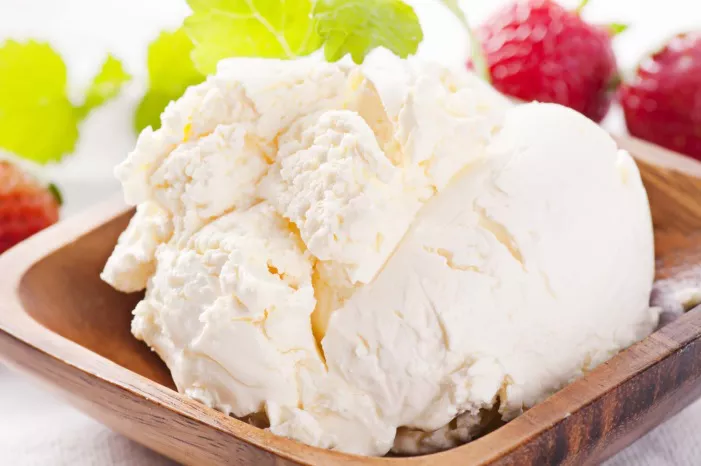Cream, in the world of desserts, is a versatile and indulgent component that takes various forms to elevate the taste and aesthetics of sweet treats. Among the multitude of options available, two styles stand out prominently: buttercream and naked cream. As confectionery enthusiasts continue to explore diverse culinary landscapes, understanding the differences between these two cream-centric approaches becomes essential. In this article, we’ll delve into the delectable realms of buttercream and naked cream, deciphering their unique characteristics and exploring how they each contribute to the delightful world of desserts.
Buttercream Unveiled:
Cream, the cornerstone of many delectable desserts, takes center stage in buttercream – a velvety and indulgent frosting that graces cakes with its rich texture and luxurious flavor. Buttercream typically consists of butter, confectioners’ sugar, and flavorings such as vanilla or chocolate. The creamy base is whipped to perfection, creating a smooth and spreadable frosting that can be piped into intricate designs. The result is a confectionery masterpiece that not only delights the taste buds but also showcases the versatility of cream in creating a decadent and visually appealing finish.
Naked Cream:
Cream, celebrated for its ability to add a touch of luxury to desserts, takes on a different role in the concept of naked cream. Unlike its more elaborate counterpart, naked cream celebrates simplicity by allowing the natural beauty of the cake layers to shine through. In naked cakes, the layers are thinly frosted with a minimal amount of cream, leaving the edges exposed for a rustic and unfinished appearance. This style not only emphasizes the flavors of the cake itself but also challenges the notion that excessive cream is required to create a stunning and delicious dessert.
Buttercream Bliss:
Cream, in the form of buttercream, becomes a canvas for artistic expression in the world of cake decoration. The richness and malleability of buttercream make it ideal for intricate piping, creating elaborate patterns, flowers, and designs that transform a simple cake into a work of art. The creaminess of buttercream allows it to hold its shape, making it a favorite among bakers for creating visually stunning cakes that are as pleasing to the eyes as they are to the palate. The artistry involved in working with buttercream showcases the limitless possibilities that cream offers in the realm of dessert decoration.
Naked Cream’s Appeal:
Cream, when adopted in the naked cream style, takes a backseat to the star of the show – the cake itself. In naked cakes, the cream is applied sparingly, allowing the layers of the cake to be partially exposed. This minimalist approach not only highlights the natural beauty of the cake layers but also ensures that the flavors of the cake take center stage. Naked cream becomes a supporting actor, enhancing the overall texture and moisture of the cake without overshadowing its inherent taste. The result is a dessert that celebrates the essence of the cake, unencumbered by excessive frosting.
Buttercream’s Flavor Versatility:
Cream, as a key component of buttercream, plays a crucial role in infusing flavor into cakes and other confections. The buttery and smooth texture of buttercream provides a perfect base for incorporating a myriad of flavors, from classic vanilla to decadent chocolate, citrusy lemon, or even exotic fruit essences. The ability of cream to absorb and carry these flavors ensures that each bite of a buttercream-covered treat is a symphony of taste sensations. The versatility of buttercream in flavor customization is a testament to the creative possibilities that cream brings to the world of dessert making.
Naked Cream’s Flavor Harmony:
Cream, when applied in the naked cream style, embraces a different approach to flavor enhancement. The minimal use of cream in naked cakes ensures that the flavor profile of the cake itself remains the focal point. The cream acts as a harmonizing agent, providing a subtle and nuanced sweetness that complements the inherent taste of the cake layers. Naked cream allows for a more authentic and unmasked flavor experience, appealing to those who prefer a dessert that is not overwhelmed by the richness of frosting.
Buttercream’s Texture Triumph:
Cream, in the form of buttercream, contributes to the luxurious texture that defines this frosting style. The combination of butter and confectioners’ sugar, meticulously whipped to perfection, results in a silky smooth and velvety consistency. This texture not only enhances the overall mouthfeel of the dessert but also allows for the creation of intricate designs and decorations. The smoothness of buttercream, achieved through the careful incorporation of cream, adds a layer of decadence to cakes that is both indulgent and visually captivating.
Naked Cream’s Textural Contrast:
Cream, as seen in naked cakes, introduces a different textural element that celebrates imperfection. The thin layer of cream applied to naked cakes allows for the rustic and uneven appearance of the exposed cake layers. This textural contrast creates a visually appealing dessert that exudes charm and authenticity. Naked Cream’s embrace of imperfection challenges the conventional notion that a perfectly frosted cake is the epitome of dessert aesthetics, proving that cream can contribute to beauty in diverse and unexpected ways.
Buttercream’s Temperature Tolerance:
Cream, in the form of buttercream, showcases its ability to hold its form even in varying temperatures. The butter in buttercream provides stability, allowing for intricate piping and decorative elements that withstand room temperature or mild fluctuations. This characteristic makes buttercream an excellent choice for creating elaborate designs that require precision and structure. The resilience of buttercream, a testament to the properties of cream, ensures that the visual appeal of the dessert remains intact, whether served at a summer celebration or a winter wedding.
Naked Cream’s Casual Elegance:
Cream, when adopted in the naked cream style, embodies a casual elegance that resonates with those seeking a more relaxed and informal dessert presentation. The exposed edges of the cake layers and the minimal application of cream create an effortlessly chic aesthetic. Naked cream complements various occasions, from rustic weddings to laid-back gatherings, proving that cream can play a role in dessert aesthetics that goes beyond the traditional and formal.
Conclusion
In the delightful world of desserts, cream takes on various roles, contributing to both the taste and aesthetics of sweet creations. Whether in the opulent form of buttercream, with its rich textures and intricate designs, or the more subdued style of naked cream, which embraces simplicity and flavor, cream proves to be a versatile and indispensable component in the realm of confectionery. As bakers and dessert enthusiasts continue to explore the boundaries of creativity, the dichotomy between buttercream and naked cream exemplifies the nuanced ways in which cream can elevate desserts, offering a sweet conundrum for those seeking the perfect balance of flavor and visual appeal.

























